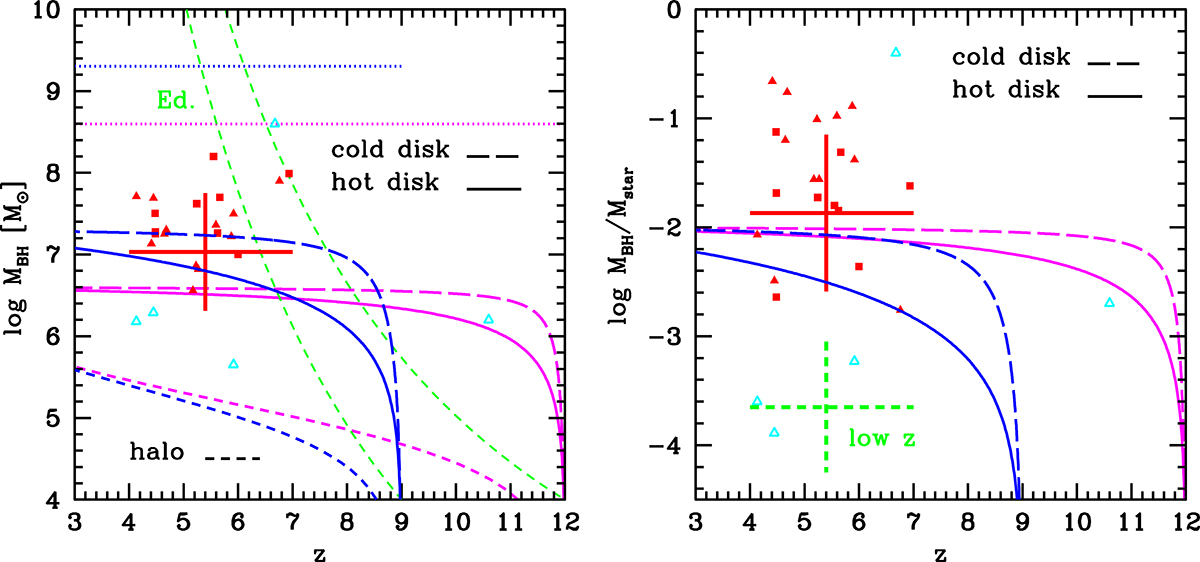Fig. 8.

Download original image
Supermassive BH mass (left) and BH-to-stellar mass ratio (right) as a function of redshift for zffb = 9 (blue) and 12 (magenta), with m = 104 M⊙. This is either in a hot disk (Eq. (19), solid) or in a cold disk (Eq. (21), long-dashed). The FFB-threshold halo properties as a function of zffb are from Eqs. (24) and (25) (Dekel et al. 2023a). The SFE is ϵ = 0.2. The BHs are assumed to be on circular orbits responding to DF from the stellar disk (V/σ = 5) plus an NFW DM halo (whose contribution is negligible, short dashed). The BHs are assumed to start in an exponential disk whose radius is estimated in Eq. (27) (Li et al. 2024b). The galaxy stellar mass, assumed to be constant in time, is marked (dotted). The 1σ scatter due to the scatter in disk size in Eq. (27) is ±0.2 dex. Eddington growth is marked for comparison (thin dashed green) The observational estimates are shown for comparison. The data are from Maiolino et al. (2024b) (circles), Harikane et al. (2023) and Übler et al. (2023) (squares). The selection-bias-corrected mean and standard deviation by (Pacucci et al. 2023) based on the data in red symbols are marked by the red lines. The values of fbh at z = 4 − 7 are > 3σ above the standard z = 0 low-z ratio by Reines & Volonteri (2015) (indicated by dashed green lines). The average SMBH masses and fbh ratios as deduced from the observations at z ∼ 4 − 7 are reproduced by the 104 M⊙ seeds of the FFB scenario.
Current usage metrics show cumulative count of Article Views (full-text article views including HTML views, PDF and ePub downloads, according to the available data) and Abstracts Views on Vision4Press platform.
Data correspond to usage on the plateform after 2015. The current usage metrics is available 48-96 hours after online publication and is updated daily on week days.
Initial download of the metrics may take a while.


